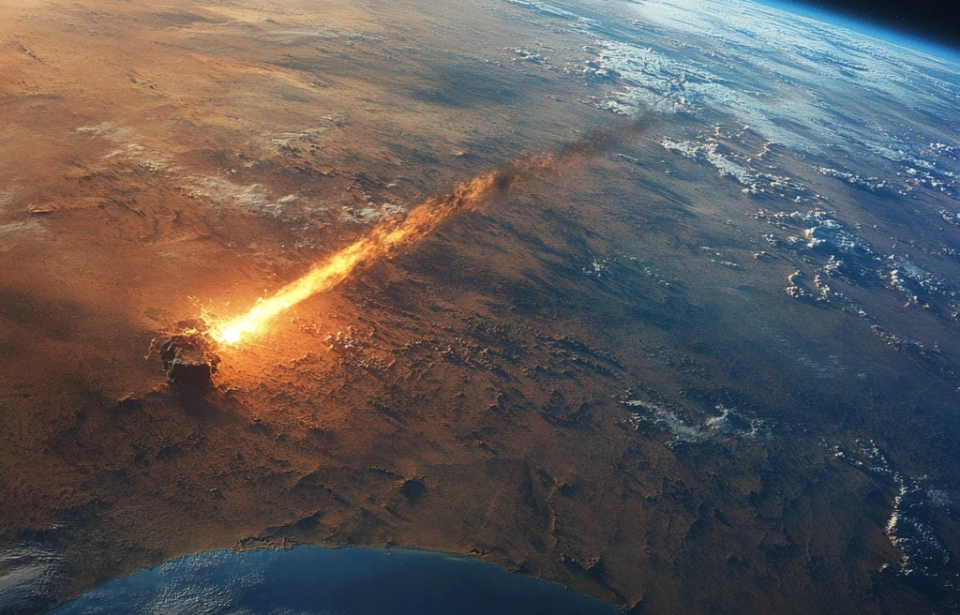It’s long been theorized that it was a lone asteroid that caused dinosaurs to go extinct. However, a team of scientists have revealed that it wasn’t one, but two massive space rocks that crashed into Earth, wiping out the prehistoric creatures during the Cretaceous Period.

This revelation follows a 2022 discovery by Dr. Uisdean Nicholson from Edinburgh‘s Heriot-Watt University. Just off the coast of West Africa, in the Atlantic Ocean, Nicholson located what’s been dubbed the “Nadir crater,” caused by a slightly smaller asteroid crashing into Earth around the same time as the larger one credited with completely wiping out the dinosaurs.
Initially, Nicholson and his colleagues weren’t sure what had caused the over five-mile depression in the seabed, about 300 meters below the water’s surface, but their research has made them certain that a second asteroid is to blame.
It’s believed the space rock burst into flames upon hitting Earth’s atmosphere between 65 and 67 million years ago, an event that would’ve created a loud air blast before causing a magnitude 7 earthquake and tsunami. It likely would have struck the ground at around 45,000 MPH.

The asteroid credited with causing dinosaurs to go extinct struck Mexico‘s Yucatan Peninsula approximately 66 million years ago. The impact left a 100-mile-wide in what’s now Chicxulub.
Scientists say it’s rare for asteroids to strike the earth so close to each other, which makes Nicholson and his team question why these two did just that.
To gain a better understanding of the Nadir crater, the scientists analyzed 3D data, which allowed to examine individual rock levels. What they found was the collision was so intense that it liquified sediment beneath the seafloor, causing faults to form below the seabed and triggering landslides.
“This is the first time that we’ve ever been able to see inside an impact crater like this – it’s really exciting,” Nicholson is quoted as saying in a press release from Heriot-Watt University. “The new images paint a picture of the catastrophic event.”
He also hinted at what’s next, saying, “We’ve applied to IODP3, which is a new international drilling program, to drill into the seabed and recover cores from the crater. These will give us more information about the shock pressures experienced during impact, and the precise age and sequence of events that occurred after this event.”

More from us: Did Merlin Really Exist? Researcher Unearthed Evidence of Merlin’s Grave in Scotland
Want to become a trivia master? Sign up for our Today In History newsletter!
Additional information about the Nadir crater can be found in “3D anatomy of the Cretaceous–Paleogene age Nadir Crater,” which was published in the journal Communications Earth & Environment on October 3, 2024.
